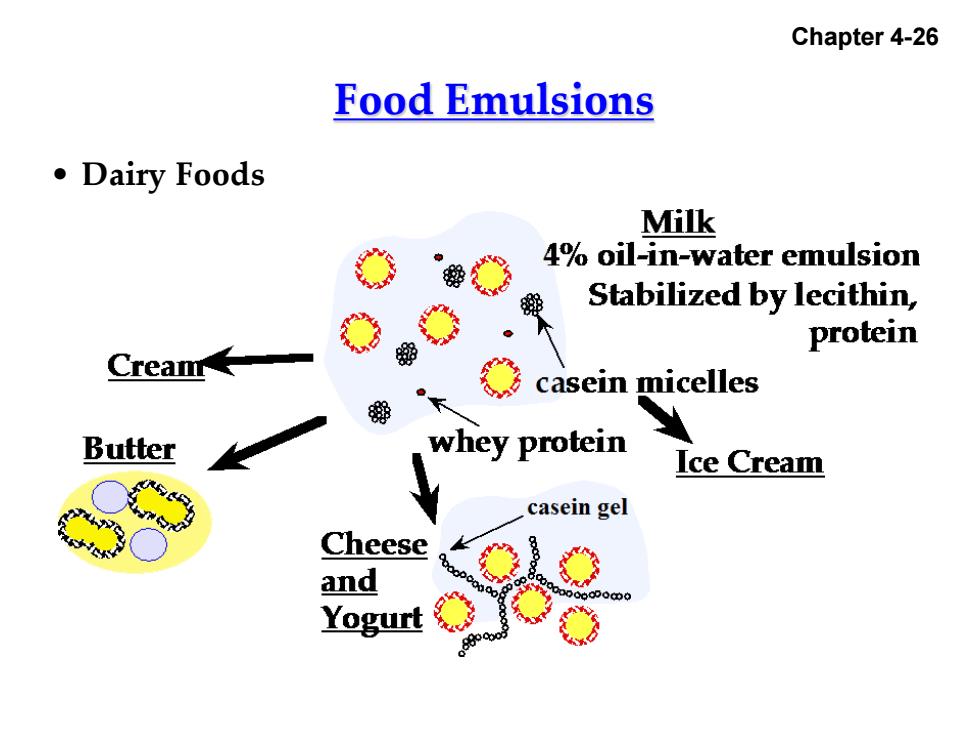
Chapter 4-26 Food Emulsions ●Dairy Foods Milk 4%oil-in-water emulsion Stabilized by lecithin, protein Cream casein micelles Butter whey protein Ice Cream casein gel Cheese and Yogurt
Chapter 4-26 Food Emulsions • Dairy Foods
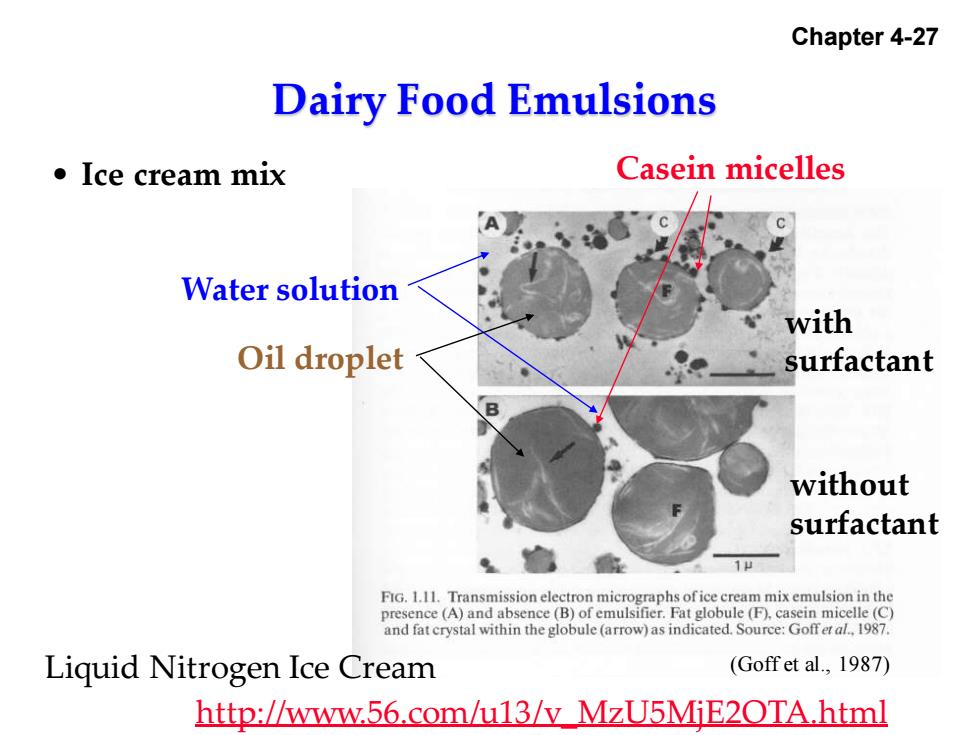
Chapter 4-27 Dairy Food Emulsions ●Ice cream mix Casein micelles Water solution with Oil droplet surfactant without surfactant 1 FIG.1.11.Transmission electron micrographs ofice cream mix emulsion in the presence (A)and absence(B)of emulsifier.Fat globule(F).casein micelle(C) and fat crystal within the globule (arrow)as indicated.Source:Goffer al.,1987. Liquid Nitrogen Ice Cream (Goffet al.,1987) http://www.56.com/u13/y MzU5MiE2OTA.html
Chapter 4-27 Dairy Food Emulsions • Ice cream mix Water solution Oil droplet Casein micelles with surfactant without surfactant Liquid Nitrogen Ice Cream (Goff et al., 1987) http://www.56.com/u13/v_MzU5MjE2OTA.html
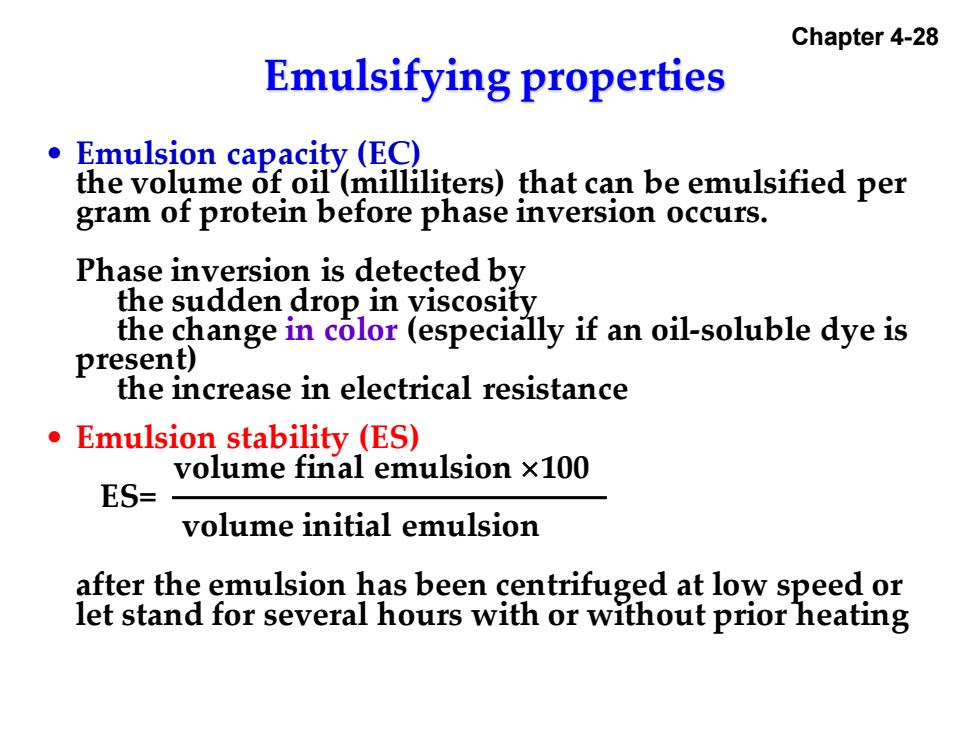
Chapter 4-28 Emulsifying properties Emulsion capacity (EC) the volume of oil(milliliters)that can be emulsified per gram of protein before phase inversion occurs. Phase inversion is detected by the sudden drop in viscosity the change in color (especially if an oil-soluble dye is present) the increase in electrical resistance Emulsion stability (ES) volume final emulsion x100 ES= volume initial emulsion after the emulsion has been centrifuged at low speed or let stand for several hours with or without prior heating
Chapter 4-28 Emulsifying properties • Emulsion capacity (EC) the volume of oil (milliliters) that can be emulsified per gram of protein before phase inversion occurs. Phase inversion is detected by the sudden drop in viscosity the change in color (especially if an oil-soluble dye is present) the increase in electrical resistance • Emulsion stability (ES) volume final emulsion 100 ES= volume initial emulsion after the emulsion has been centrifuged at low speed or let stand for several hours with or without prior heating
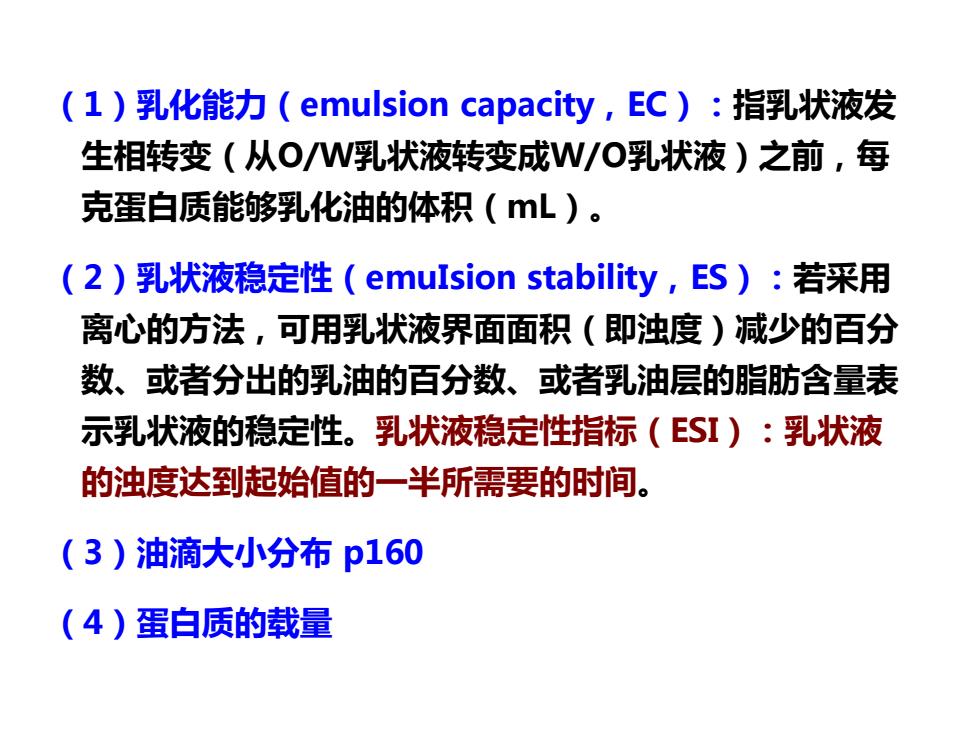
(1)乳化能力(emulsion capacity,EC):指乳状液发 生相转变(从OW乳状液转变成W/O乳状液)之前,每 克蛋白质能够乳化油的体积(L)。 (2)乳状液稳定性(emuIsion stability,ES):若采用 离心的方法,可用乳状液界面面积(即浊度)减少的百分 数、或者分出的乳油的百分数、或者乳油层的脂肪含量表 示乳状液的稳定性。乳状液稳定性指标(ESI):乳状液 的浊度达到起始值的一半所需要的时间。 (3)油滴大小分布p160 (4)蛋白质的载量
(1)乳化能力(emulsion capacity,EC):指乳状液发 生相转变(从O/W乳状液转变成W/O乳状液)之前,每 克蛋白质能够乳化油的体积(mL)。 (2)乳状液稳定性(emuIsion stability,ES):若采用 离心的方法,可用乳状液界面面积(即浊度)减少的百分 数、或者分出的乳油的百分数、或者乳油层的脂肪含量表 示乳状液的稳定性。乳状液稳定性指标(ESI):乳状液 的浊度达到起始值的一半所需要的时间。 (3)油滴大小分布 p160 (4)蛋白质的载量
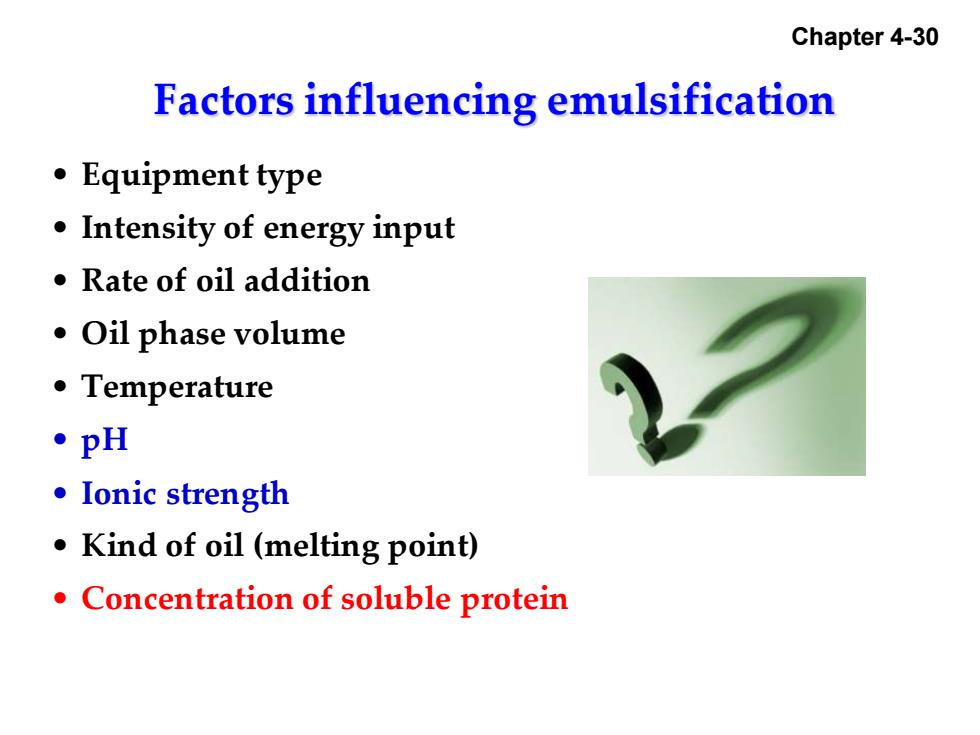
Chapter 4-30 Factors influencing emulsification 。Equipment type Intensity of energy input ·Rate of oil addition ●Oil phase volume ●Temperature ·pH 。Ionic strength Kind of oil (melting point) Concentration of soluble protein
Chapter 4-30 Factors influencing emulsification • Equipment type • Intensity of energy input • Rate of oil addition • Oil phase volume • Temperature • pH • Ionic strength • Kind of oil (melting point) • Concentration of soluble protein